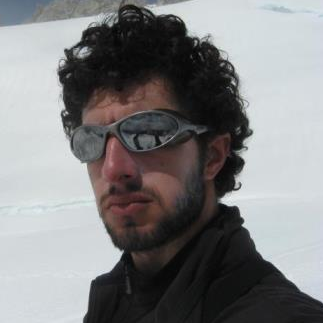Innovative and Synergistic Approaches for Multi-Scale Glacier Monitoring Using Remote Sensing Technologies
A special issue of Remote Sensing (ISSN 2072-4292). This special issue belongs to the section "Remote Sensing in Geology, Geomorphology and Hydrology".
Deadline for manuscript submissions: closed (1 October 2021) | Viewed by 8916
Special Issue Editors
Interests: glacial hazards; remote sensing; glacier mapping; glacier dynamics; andean glaciers; satellite-based mapping; UAV-based mapping
Interests: remote sensing of glaciers; glacier change; glacier dynamics; glacier instabilities; digital terrain analysis; central and patagonian andes
Special Issue Information
Dear Colleagues,
In recent decades, advances in space and air-borne remote sensing technology have led to a massive increase in data available for glacier monitoring. These advances have improved our ability to observe and understand glacier changes at multiple spatial and temporal scales, allowing the scientific community to investigate remote, difficult to access glaciers. However, there are now opportunities to push our understanding of glacier behaviour forward through the development of multi-sensor, web-based data platforms. This can be facilitated by implementing a synergistic approach, which may include innovative glacier mapping techniques, open-source coding and sophisticated geospatial methodologies, among others. With this in mind, we invite research papers that 1) highlight cutting-edge remote sensing and geospatial technologies to monitor high mountain glaciers, 2) address the current gaps, state and remaining challenges faced in using such new technologies and 3) review data challenges, data sharing difficulties and present innovative solutions to overcome them.
Potential paper topics include, but are not limited to:
- Use of innovative, cutting-edge remote sensing technologies, including thermal data and/or newly launched sensors to monitor the current state of glaciers;
- Use of web-based interfaces such as Google Earth Engine, big data and open source coding that incorporate multi-sensor data and facilitate automated mapping of glacier boundaries, surface characteristics and their changes over time;
- Development of cross-disciplinary approaches that allow for holistic glacier assessments;
- Adapting micro-scale image analysis tools routinely used in other fields (e.g. medical imaging, material texture analysis, etc.) for application in larger-scale glacier monitoring;
- Synergy between traditional GIS technologies and recent, advanced technologies (g. machine learning, object oriented approaches, etc.);
- Fusion of multi-sensor optical remote sensing with microwave data;
- Assessments of current uncertainties related to space- and/or air-borne glacier mapping and outlook for future developments.
We would like to encourage submissions from early-career researchers, particularly those based in countries encompassing the high mountain ranges of the world.
Dr. Ryan Wilson
Dr. Daniel Falaschi
Dr. Adina Racoviteanu
Guest Editors
Manuscript Submission Information
Manuscripts should be submitted online at www.mdpi.com by registering and logging in to this website. Once you are registered, click here to go to the submission form. Manuscripts can be submitted until the deadline. All submissions that pass pre-check are peer-reviewed. Accepted papers will be published continuously in the journal (as soon as accepted) and will be listed together on the special issue website. Research articles, review articles as well as short communications are invited. For planned papers, a title and short abstract (about 100 words) can be sent to the Editorial Office for announcement on this website.
Submitted manuscripts should not have been published previously, nor be under consideration for publication elsewhere (except conference proceedings papers). All manuscripts are thoroughly refereed through a single-blind peer-review process. A guide for authors and other relevant information for submission of manuscripts is available on the Instructions for Authors page. Remote Sensing is an international peer-reviewed open access semimonthly journal published by MDPI.
Please visit the Instructions for Authors page before submitting a manuscript. The Article Processing Charge (APC) for publication in this open access journal is 2700 CHF (Swiss Francs). Submitted papers should be well formatted and use good English. Authors may use MDPI's English editing service prior to publication or during author revisions.
Keywords
- Glacier monitoring
-
High Mountain areas
-
Multi-sensor
-
Big data
-
Machine learning
- Cross-disciplinary







